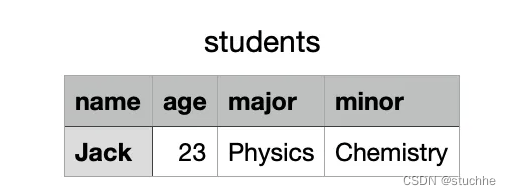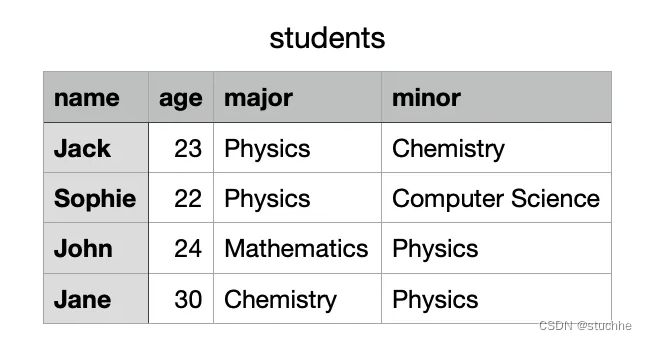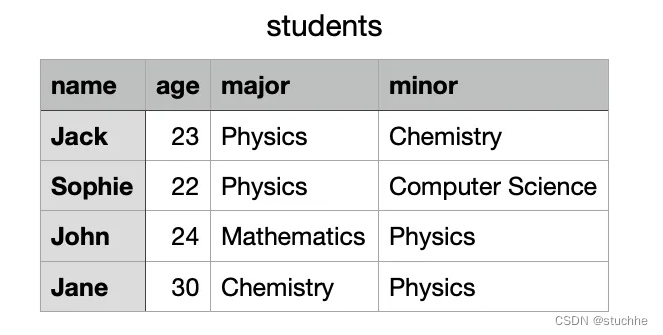Python讀寫csv文件的操作方法
本文講解"Python讀寫csv文件的操作方法",希望能夠解決相關問題。
要在 Python 中寫入 CSV,請使用 Python 的 csv 模塊。
例如,讓我們將一個字符串列表寫入一個新的 CSV 文件:
import csv
data = ["This", "is", "a", "Test"]
with open('example.csv', 'w') as file:
writer = csv.writer(file)
writer.writerow(data)因此,您會在當前文件夾中看到一個名為 example.csv 的文件。
用 Python 編寫 CSV 的 4 個步驟
要在 Python 中寫入 CSV 文件:
1. 以寫入模式打開 CSV 文件。 這是使用 open() 函數(shù)發(fā)生的。 給它文件的路徑作為第一個參數(shù)。 將模式指定為第二個參數(shù)(“r”表示讀取,“w”表示寫入)。
2. 創(chuàng)建 CSV 編寫器對象。 為此,創(chuàng)建一個 csv 模塊的 writer() 對象,并將打開的文件作為其參數(shù)傳遞。
3. 將數(shù)據(jù)寫入 CSV 文件。 使用 writer 對象的 writerow() 函數(shù)將數(shù)據(jù)寫入 CSV 文件。
4. 關閉 CSV 文件,使用文件的 close() 方法。
這是一個說明此過程的示例:
import csv
# 1.
file = open('test.csv', 'w')
# 2.
writer = csv.writer(file)
# 3.
data = ["This", "is", "a", "Test"]
writer.writerow(data)
# 4.
file.close()這段代碼在當前文件夾中創(chuàng)建了一個名為 test.csv 的文件。
如果指定的文件不存在,open() 函數(shù)將打開一個新文件。 如果是,則打開現(xiàn)有文件。
速寫
要縮短寫入 CSV 的時間,請使用 with 語句打開文件。 這樣你就不用擔心自己關閉文件了。 with 會自動處理該部分。
例如:
import csv
# 1. step
with open('test.csv', 'w') as file:
# 2. step
writer = csv.writer(file)
# 3. step
data = ["This", "is", "a", "Test"]
writer.writerow(data)這將在當前文件夾中創(chuàng)建一個名為 test.csv 的新 CSV 文件,并將字符串列表寫入其中。
如何在 Python 中將非 ASCII 字符寫入 CSV
默認情況下,您不能將非 ASCII 字符寫入 CSV 文件。
要支持將非 ASCII 值寫入 CSV 文件,請在 open() 調(diào)用中將字符編碼指定為第三個參數(shù)。
with open('PATH_TO_FILE.csv', 'w', encoding="UTF8")其余過程遵循您之前學到的步驟。
如何為 CSV 文件創(chuàng)建標題
到目前為止,您已經(jīng)創(chuàng)建了缺少結(jié)構(gòu)的 CSV 文件。
在 Python 中,可以使用用于將任何數(shù)據(jù)寫入 CSV
writerow() 函數(shù)為任何 CSV 文件編寫標頭。
例子: 讓我們創(chuàng)建一個包含學生數(shù)據(jù)的示例 CSV 文件。
為了很好地構(gòu)建數(shù)據(jù),為學生創(chuàng)建一個標題并將其插入 CSV 文件的開頭。 在此之后,您可以按照之前的相同步驟將數(shù)據(jù)寫入 CSV 文件。
這是代碼:
import csv
# Define the structure of the data
student_header = ['name', 'age', 'major', 'minor']
# Define the actual data
student_data = ['Jack', 23, 'Physics', 'Chemistry']
# 1. Open a new CSV file
with open('students.csv', 'w') as file:
# 2. Create a CSV writer
writer = csv.writer(file)
# 3. Write data to the file
writer.writerow(student_header)
writer.writerow(student_data)這會將 students.csv 文件創(chuàng)建到您當前正在使用的文件夾中。新文件如下所示:

如何在 Python 中將多行寫入 CSV 文件
在 Python 中,您可以使用 CSV 編寫器的 writerows() 函數(shù)同時將多行寫入 CSV 文件。
例子。 假設您要將多行數(shù)據(jù)寫入 CSV 文件。 例如,您可能有一個學生列表,而不是只有其中一個。
要將多行數(shù)據(jù)寫入 CSV,請使用 writerows() 方法。
這是一個例子:
import csv
student_header = ['name', 'age', 'major', 'minor']
student_data = [
['Jack', 23, 'Physics', 'Chemistry'],
['Sophie', 22, 'Physics', 'Computer Science'],
['John', 24, 'Mathematics', 'Physics'],
['Jane', 30, 'Chemistry', 'Physics']
]
with open('students.csv', 'w') as file:
writer = csv.writer(file)
writer.writerow(student_header)
# Use writerows() not writerow()
writer.writerows(student_data)這會生成一個新的 CSV 文件,如下所示:

如何在 Python 中將字典寫入 CSV 文件
要在 Python 中將字典寫入 CSV 文件,請按照以下三個步驟使用 DictWriter 對象:
1. 使用 csv 模塊的 DictWriter 對象并在其中指定字段名稱。
2. 使用 writeheader() 方法將標頭創(chuàng)建到 CSV 文件中。
3. 使用 writerows() 方法將字典數(shù)據(jù)寫入文件。
例子:讓我們將學生數(shù)據(jù)字典寫入 CSV 文件。
import csv
student_header = ['name', 'age', 'major', 'minor']
student_data = [
{'name': 'Jack', 'age': 23, 'major': 'Physics', 'minor': 'Chemistry'},
{'name': 'Sophie', 'age': 22, 'major': 'Physics', 'minor': 'Computer Science'},
{'name': 'John', 'age': 24, 'major': 'Mathematics', 'minor': 'Physics'},
{'name': 'Jane', 'age': 30, 'major': 'Chemistry', 'minor': 'Physics'}
]
with open('students.csv', 'w') as file:
# Create a CSV dictionary writer and add the student header as field names
writer = csv.DictWriter(file, fieldnames=student_header)
# Use writerows() not writerow()
writer.writeheader()
writer.writerows(student_data)現(xiàn)在結(jié)果與前面示例中的 students.csv 文件相同:

結(jié)論
CSV 或逗號分隔值是一種常用的文件格式。 它由通常用逗號分隔的值組成。
要在 Python 中寫入 CSV,您需要通過以下步驟使用 csv 模塊:
1. 以寫入模式打開 CSV 文件。
2. 創(chuàng)建 CSV 編寫器對象。
3. 將數(shù)據(jù)寫入 CSV 文件。
4. 關閉 CSV 文件。
這是一個實際的例子。
import csv
data = ["This", "is", "a", "Test"]
with open('example.csv', 'w') as file:
writer = csv.writer(file)
writer.writerow(data)編碼愉快!
關于 "Python讀寫csv文件的操作方法" 就介紹到此。希望多多支持碩編程。
- python如何遍歷字符串中每一個字符
- 在Python里面調(diào)用Golang代碼的方法
- Python異步怎么使用等待有時間限制協(xié)程
- Python異步之在Asyncio中怎么運行阻塞任務
- Python反射機制怎么應用
- Python錯誤JSONDecodeError:?Expecting?value:?line?1?column?1怎么解決
- Python網(wǎng)絡爬蟲之如何獲取網(wǎng)絡數(shù)據(jù)
- python操作Excel神器openpyxl如何使用
- Python IP地址
- Python HTTP驗證
- Python HTTP服務器
- Python Web表單提交
- Python 電子郵件
- Python SMTP
- Python POP3
- Python FTP
- Python 并發(fā)簡介
- Python 線程并發(fā)
- Python 多處理器
- Python 處理器通信




